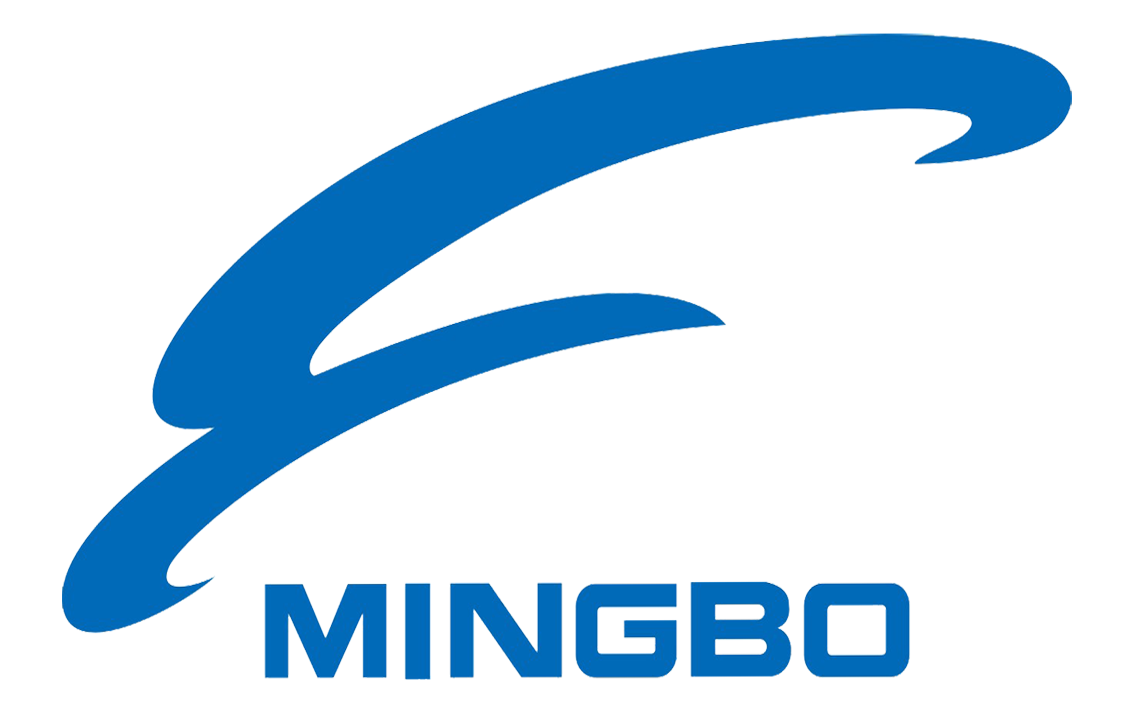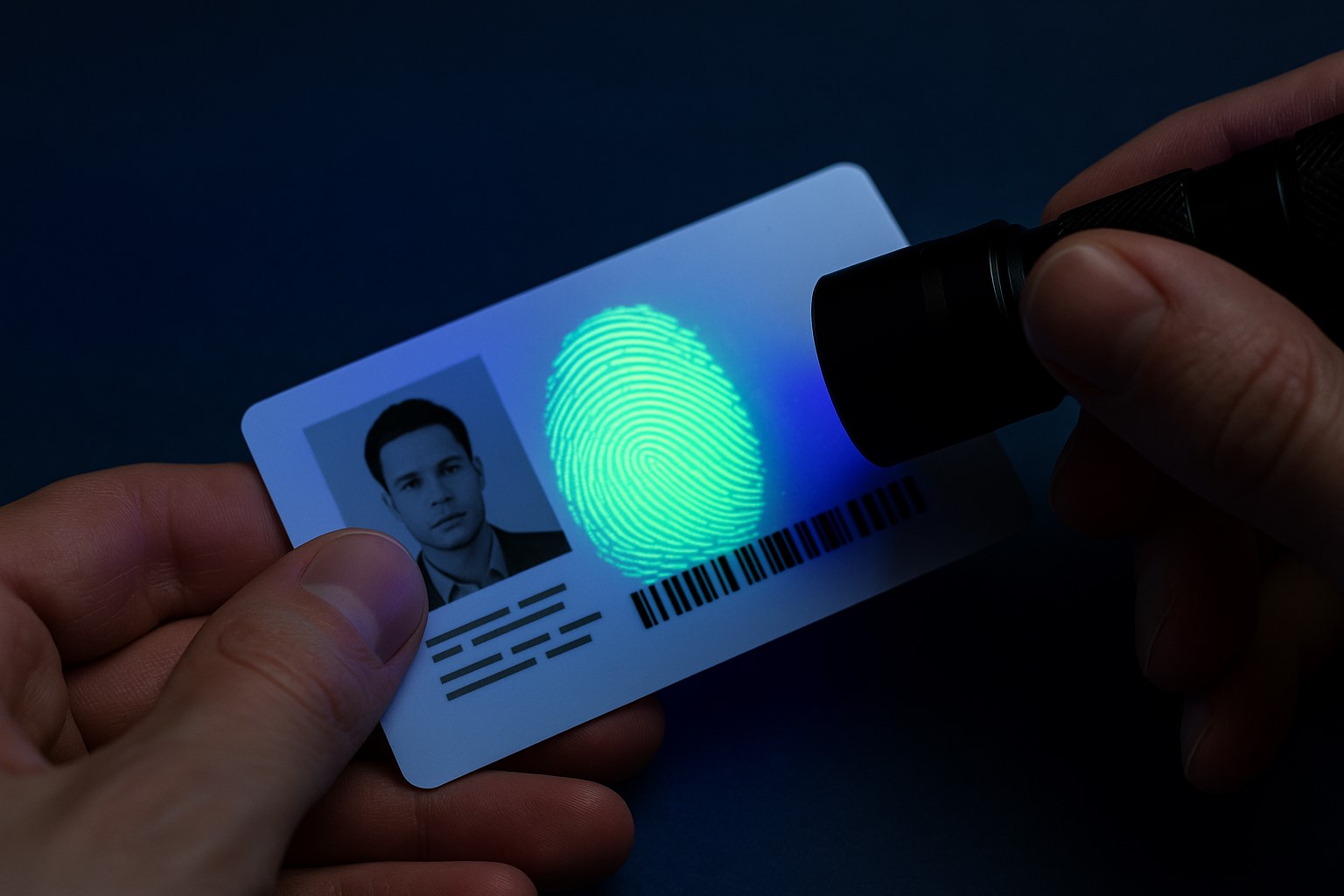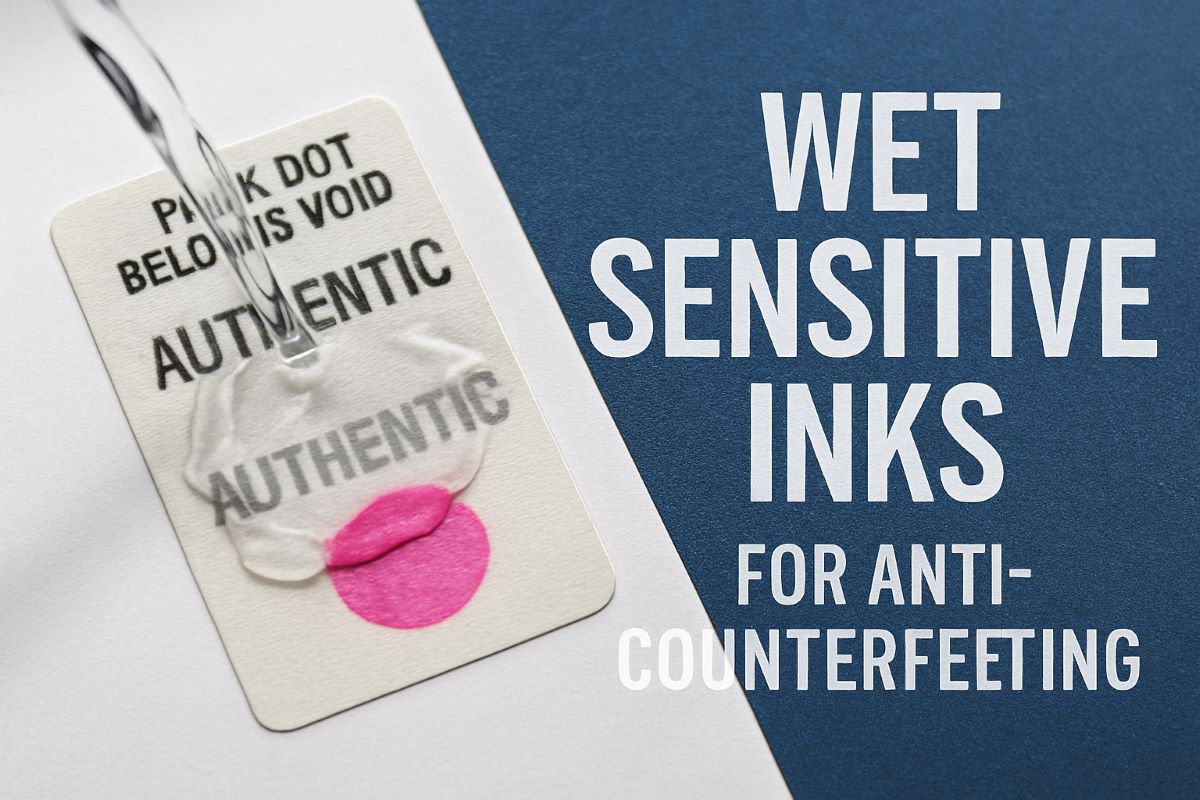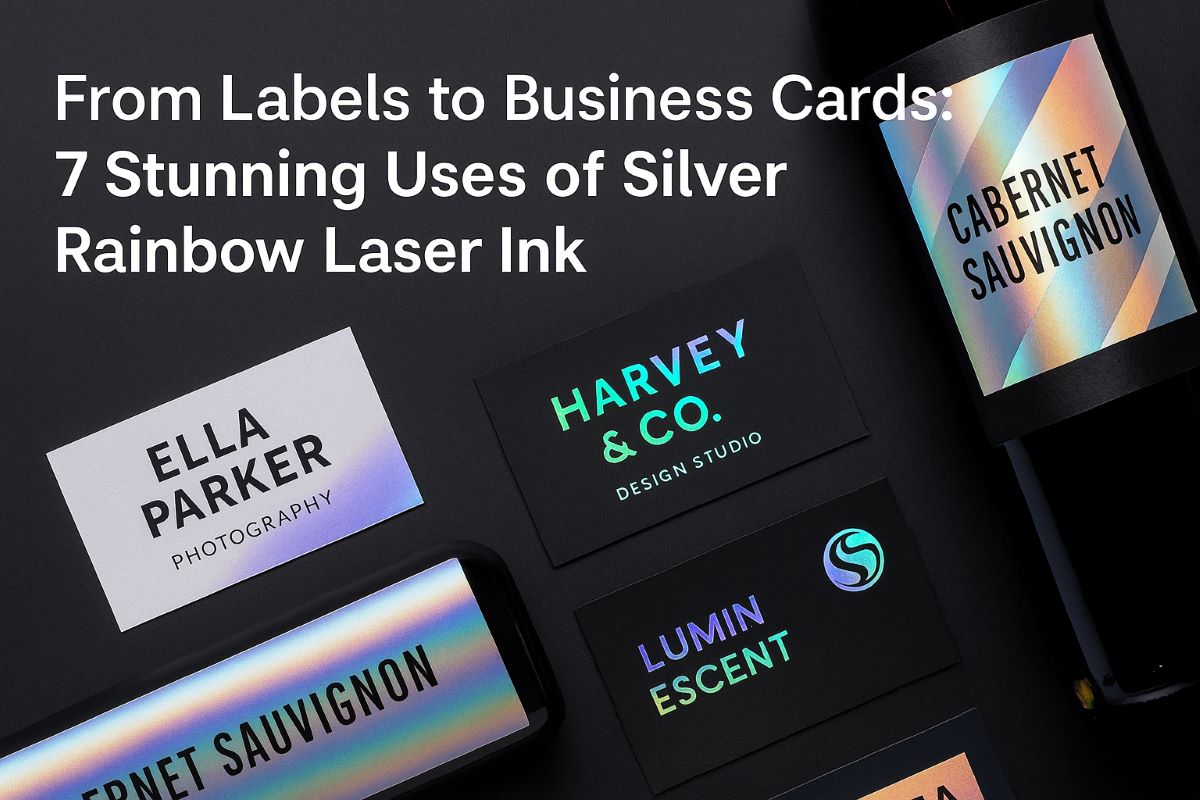The Cost of Visibility
Each year, forged documents cause over $30 billion in losses globally (IBDA report). Surprisingly, 80% of these frauds stem from weak or outdated anti-counterfeit technology.
So, how can we insert an unreplicable layer of security without changing a document’s appearance?
Now, cutting-edge covert watermark ink—once confined to aerospace and defense—is making its way into commercial industries. Thanks to its invisible optical fingerprint, it allows instant, contactless verification using UV or IR light.
I. Core Technical Mechanism: Science in Every Drop
1.1 Optical Encryption Fundamentals
Covert watermark inks rely on advanced optical materials.
Spectral Response Encryption: These inks react only to specific wavelengths (UV 365nm or IR 940nm), making them invisible to the naked eye or standard scanners.
Molecular Signature: Using rare-earth dopants, each ink formulation creates a unique, machine-readable light pattern—an optical fingerprint. (Ref: ACS Applied Materials)
This ensures every printed element is traceable and impossible to replicate without access to proprietary ink chemistry.
1.2 Dynamic Authentication Triggers
Modern invisible inks are no longer static:
Thermochromic or Hygrochromic Activation: Ink visibility changes under heat or moisture, offering environment-triggered security cues.
AI-Readable Micro-Patterning: Embedded microtaggants can be scanned by machine learning systems for automatic validation. HP’s patented Microtaggant technology is a prime example.
II. Industry Application Scenarios
2.1 Financial Document Security
Banks and government mints use covert watermark inks for high-value paper instruments, such as cheques, bonds, and currency notes.
Case Study: The European Central Bank upgraded to covert watermarking on Euro notes. Detection rate improved from 82% to 99.7%.
Specs: Mingbo’s ink meets ISO 14298 and resists organic solvents, bleaching, and high temperatures.
2.2 Legal & Government Documentation
Covert inks protect notarized certificates, contracts, and government-issued IDs.
Workflow Integration: Notary offices now link ink verification with secure mobile apps. UV flashlights reveal markings instantly.
Result: Forgery attempts drop as verification becomes decentralized yet effective.
2.3 Luxury Goods Authentication
Invisible watermark inks can be applied to product labels, packaging, and certificates of authenticity.
Dual-Mode Verification: NFC chips verify serials, while covert UV ink confirms originality at point-of-sale.
Adoption: LVMH’s 2023 Anti-Counterfeiting Report confirms increased consumer confidence through invisible validation.
III. Comparative Advantages: Why Covert Ink Wins
| Security Method | Visibility | Copy Difficulty | Verification Cost | Ideal Use Case |
| Hologram Stickers | Visible | Low | $50+/test | Retail, Entry Packaging |
| QR Codes | Visible | Medium | $0.10/test | Logistics, Retail Tracking |
| Covert Watermark Ink | Invisible | Very High | $0.01/test | High-Value Documents |
Beyond the data, covert watermark ink requires no user interaction, preserving the document’s aesthetics while enhancing security.
IV. Implementation Blueprint: How to Deploy Secure Ink Solutions
4.1 Four-Phase Integration
Needs Diagnosis:
Assess document risk and substrate type.
Use our free diagnostic checklist to guide planning.
Ink Customization:
Select spectral response (UV, IR, or combined).
Match application method (offset, flexo, inkjet).
Verification Setup:
Integrate Mingbo’s API or SDK into existing workflows.
Deploy portable readers or UV LED lights for onsite validation.
Staff Training:
Enroll in our 2-hour course.
Learn ink application, storage, and international compliance.
4.2 Cost Efficiency Analysis
Per 10,000 documents, total extra cost = <$15.
Compared to average litigation cost (~$40,000), covert watermark ink delivers 90 %+ cost reduction.
ROI is typically achieved within 60 days in high-risk sectors.
V. Pitfalls to Avoid
Over-reliance on visible tech: Covert ink complements QR and holograms, not replaces them.
Poor spectral calibration: Always verify UV lamp specs match the ink absorption range.
Lack of validation protocol: Without detection systems, covert ink loses impact.
Pro Tip: Bundle invisible inks with NFC or blockchain for layered verification.
VI. What’s Next in Covert Security Inks?
Multi-Spectral Inks: Respond to UV, IR, and X-ray for tiered security.
Blockchain-Linked ID Systems: Ink patterns generate hash codes on decentralized ledgers.
Consumer Verification Tools: Smartphone-integrated UV readers for public authentication.
Conclusion: Why Mingbo Leads in Invisible Ink Protection
When forgery risks increase, subtlety becomes power. Mingbo’s covert watermark ink solutions enable seamless, invisible, and cost-effective document security.
You don’t need to change your workflow—upgrade your ink.
Call to Action:
Explore invisible but powerful security today.
Contact Mingbo for a tailored anti-counterfeit strategy.



